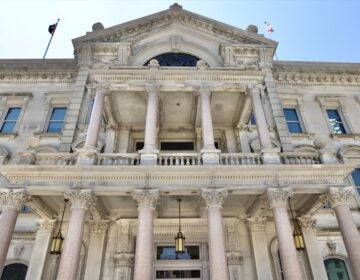Cape May: Then and Now [photos]
-
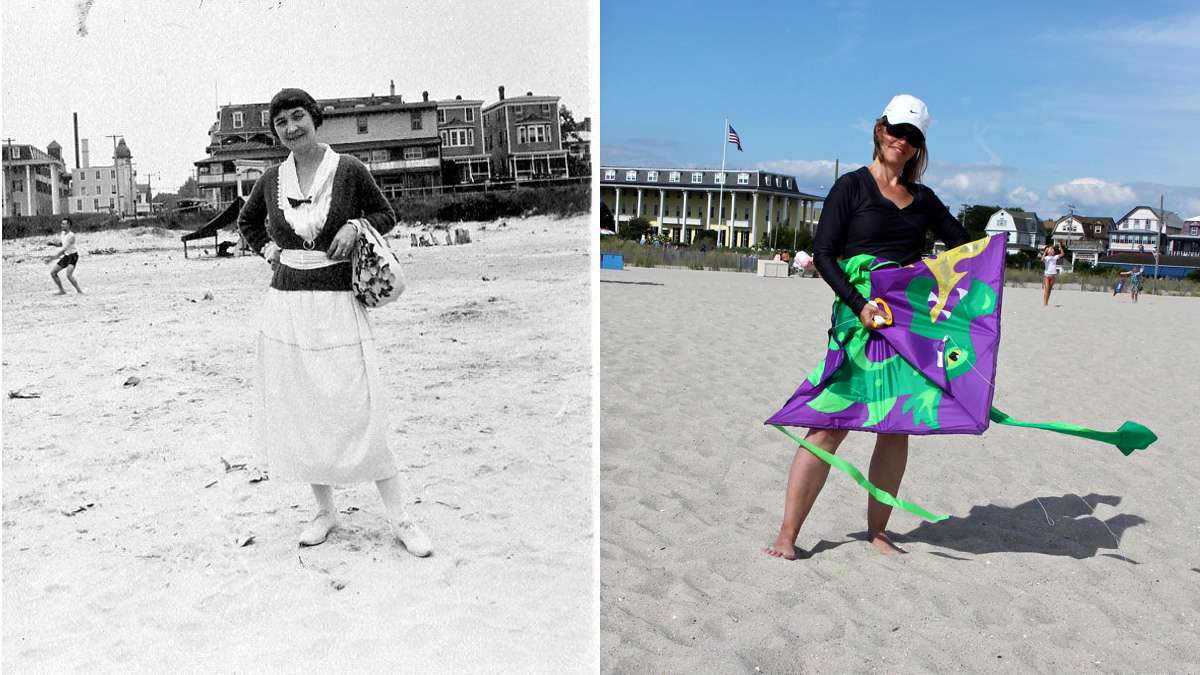
A photograph from 1920 shows a woman posing on the Perry Street beach. Nearly 100 years later, Marie Louise Miller reels in her kite to pose for a photo on the same beach. (Richard Gibbs Collection) and (Emma Lee/WHYY)
-
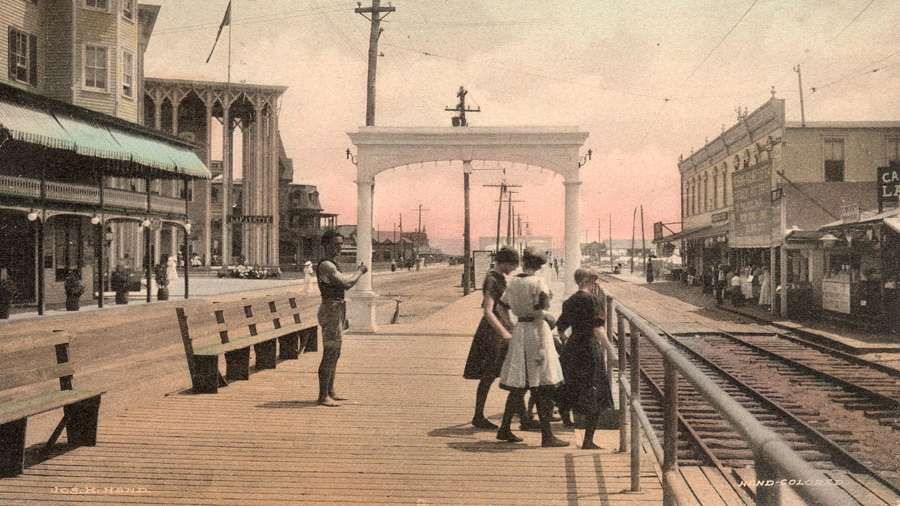
A postcard from around 1910 shows the 400 block of Beach Street with the Lafayette Hotel in the background, left. (Richard Gibbs Collection)
-
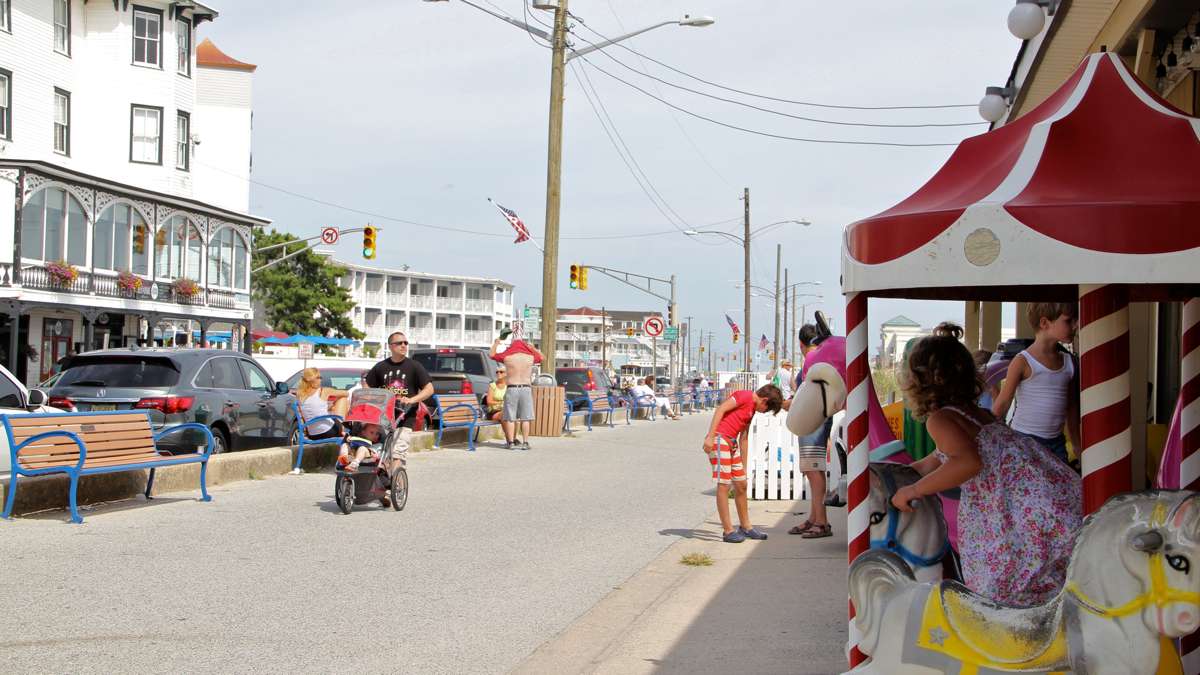
The 400 block of Beach Street today, with the modern Marquis de Lafayette hotel in the background. (Emma Lee/WHYY)
-
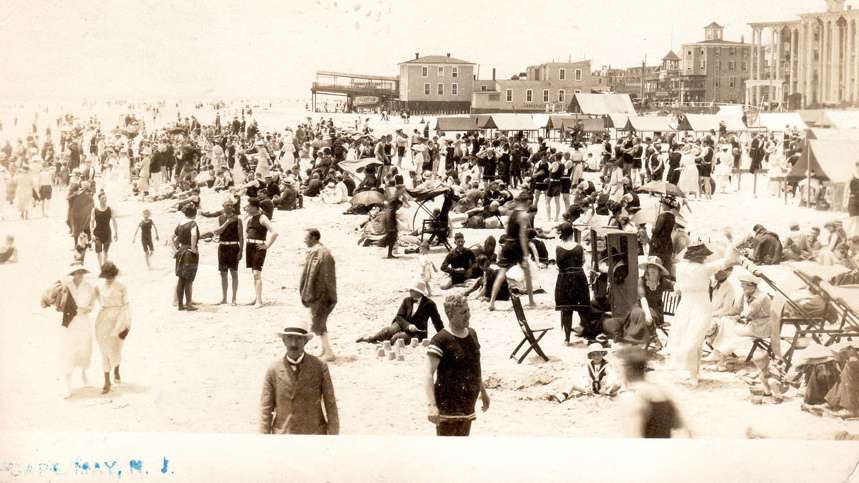
A post card depicts the Ocean Street beach as it appeared in 1920. (Richard Gibbs Collection)
-
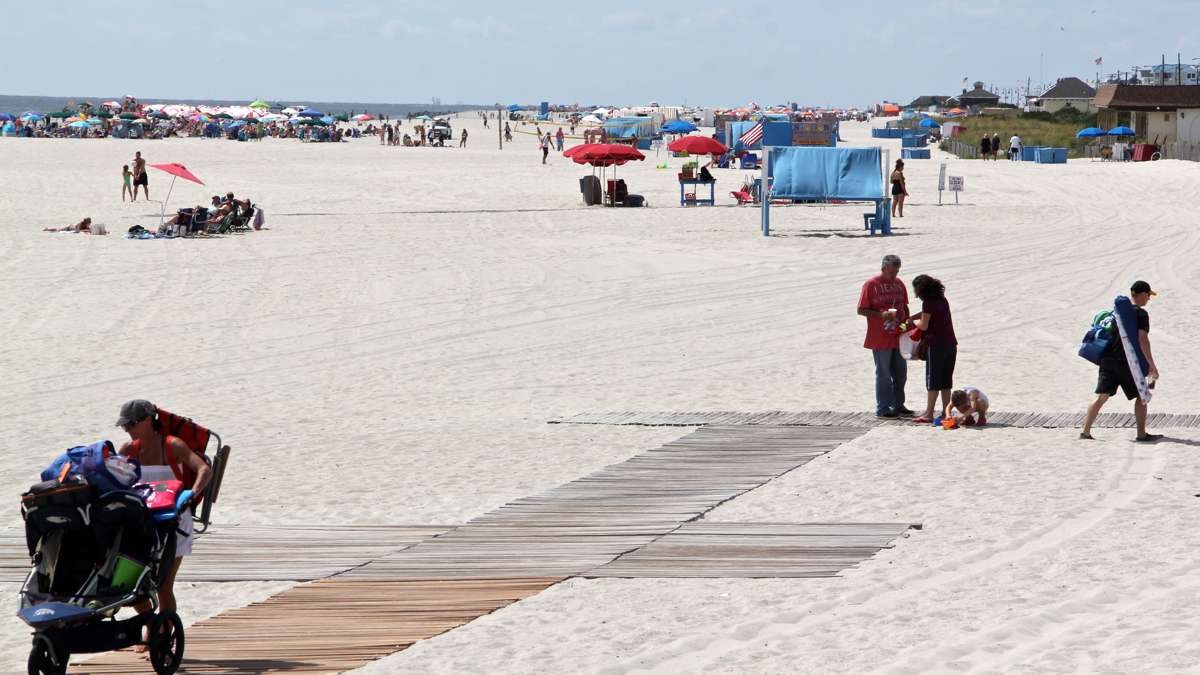
The Ocean Street beach today. (Emma Lee/WHYY)
-
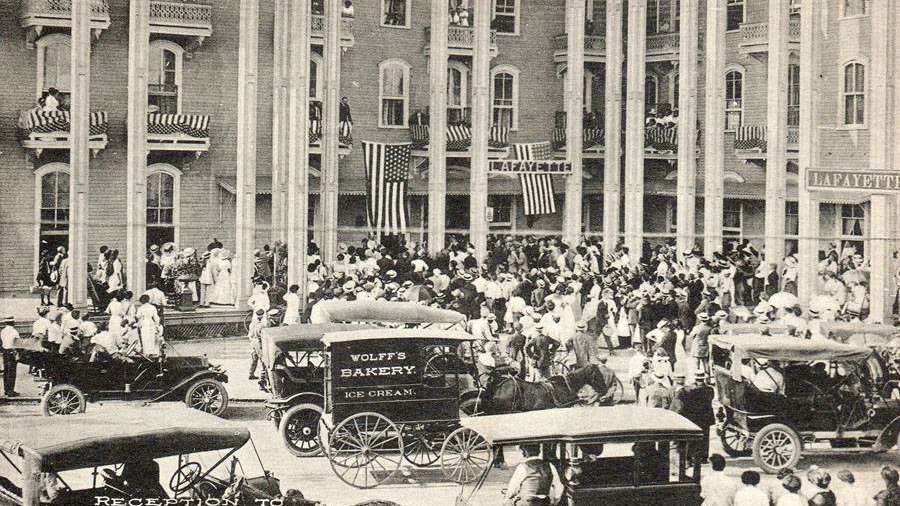
In 1911 Gov. Woodrow Wilson addressed a crowd from the balcony of the Lafayette Hotel. (Richard Gibbs Collection)
-
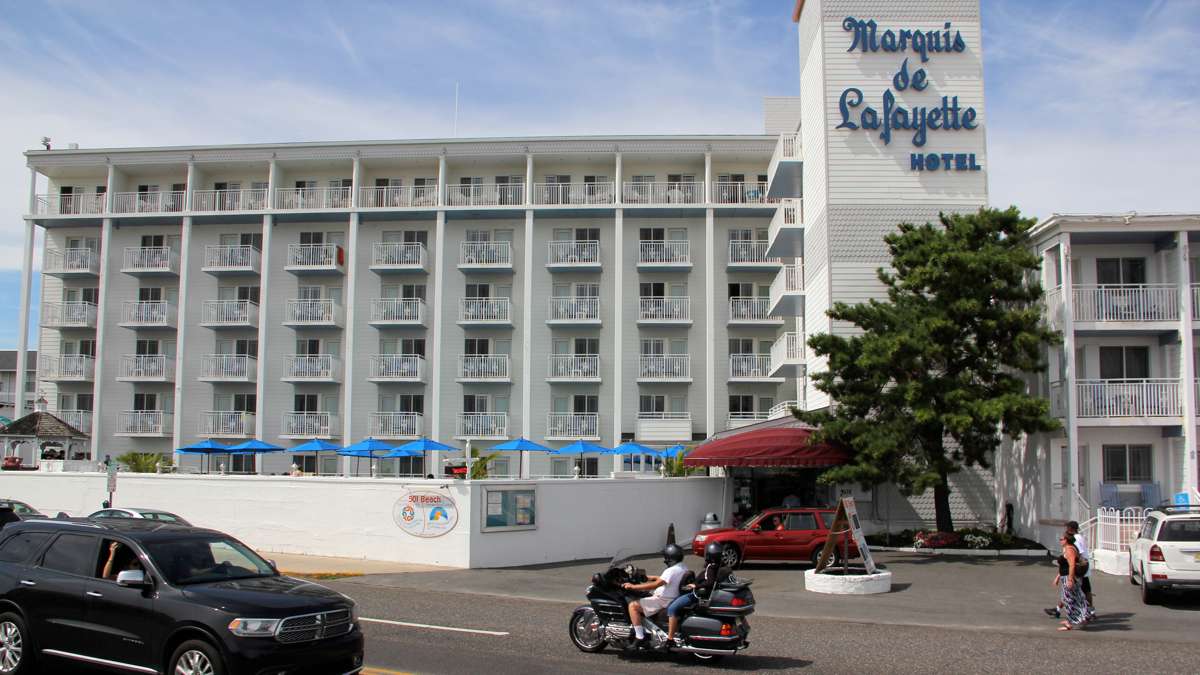
Today, the rebuilt Marquis de Lafayette Hotel occupies the same site. (Emma Lee/WHYY)
-
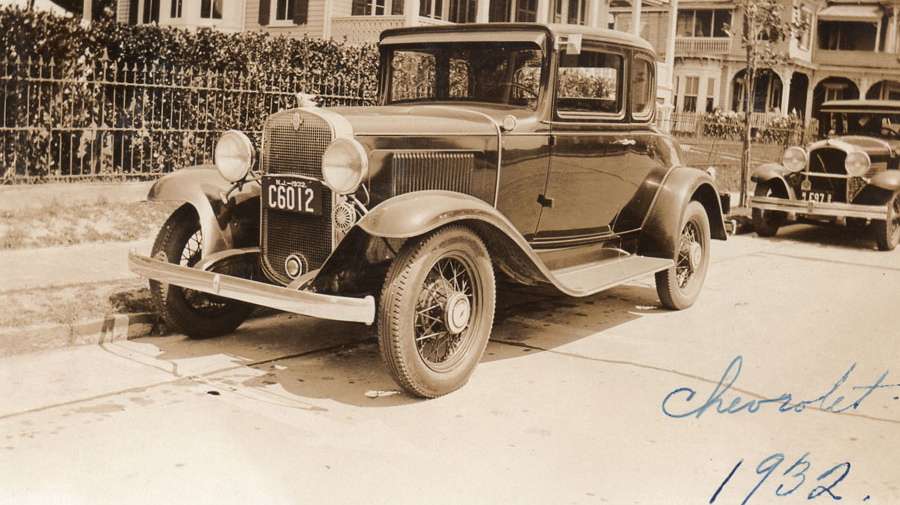
A 1932 Chevy parked in front of 203 Congress Place. (Richard Gibbs Collection)
-
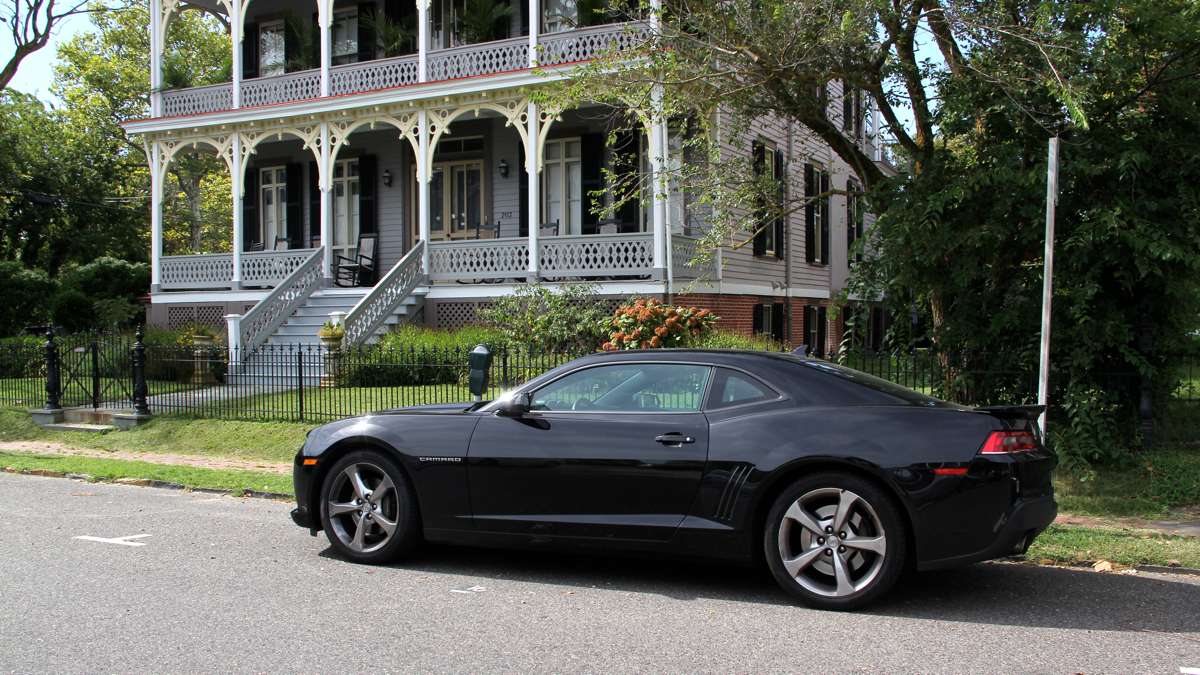
A Chevy Camaro parked in front of 203 Congress Place. (Emma Lee/WHYY)
-
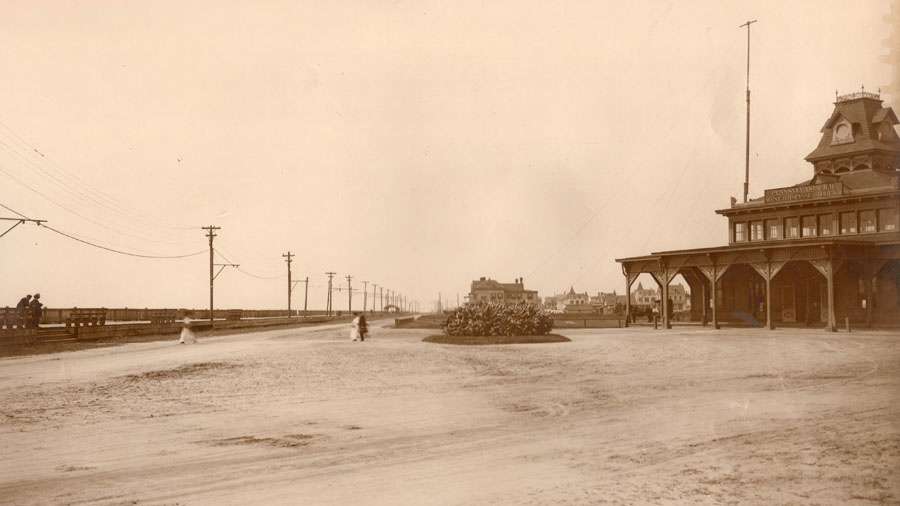
The Pennsylvania Railroad station at Beach Avenue and Grant Street. (Richard Gibbs Collection)
-
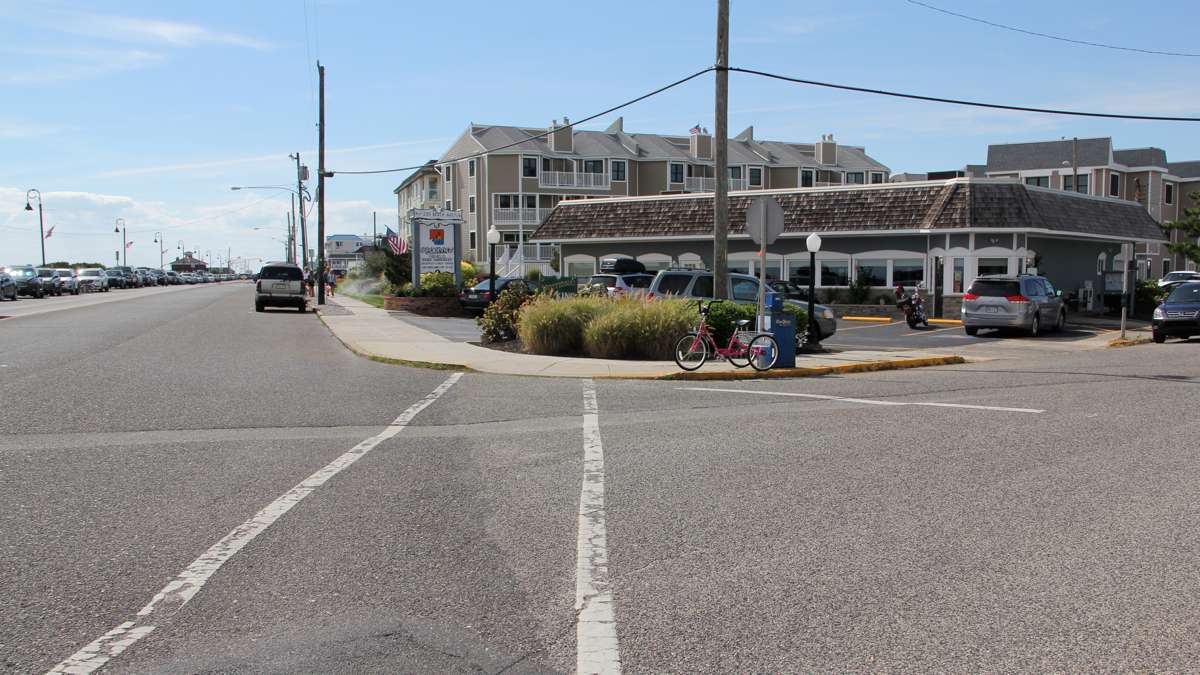
Today the Oceanview Restaurant occupies the same corner. (Emma Lee/WHYY)
-
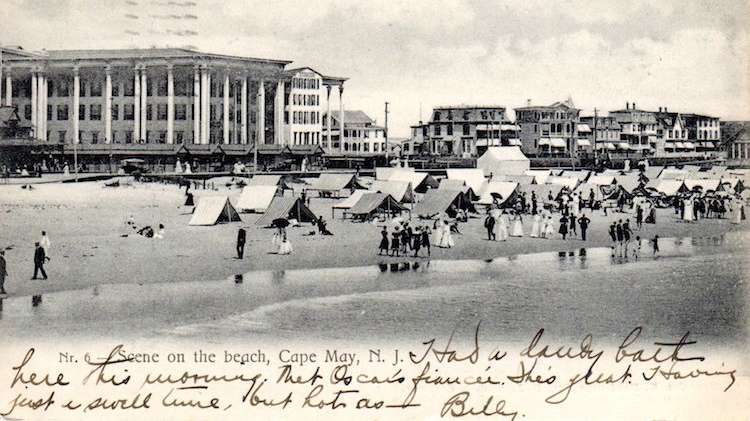
A Cape May post card shows the Stockton Hotel (left), which was torn down in 1910. (Richard Gibbs Collection)
-
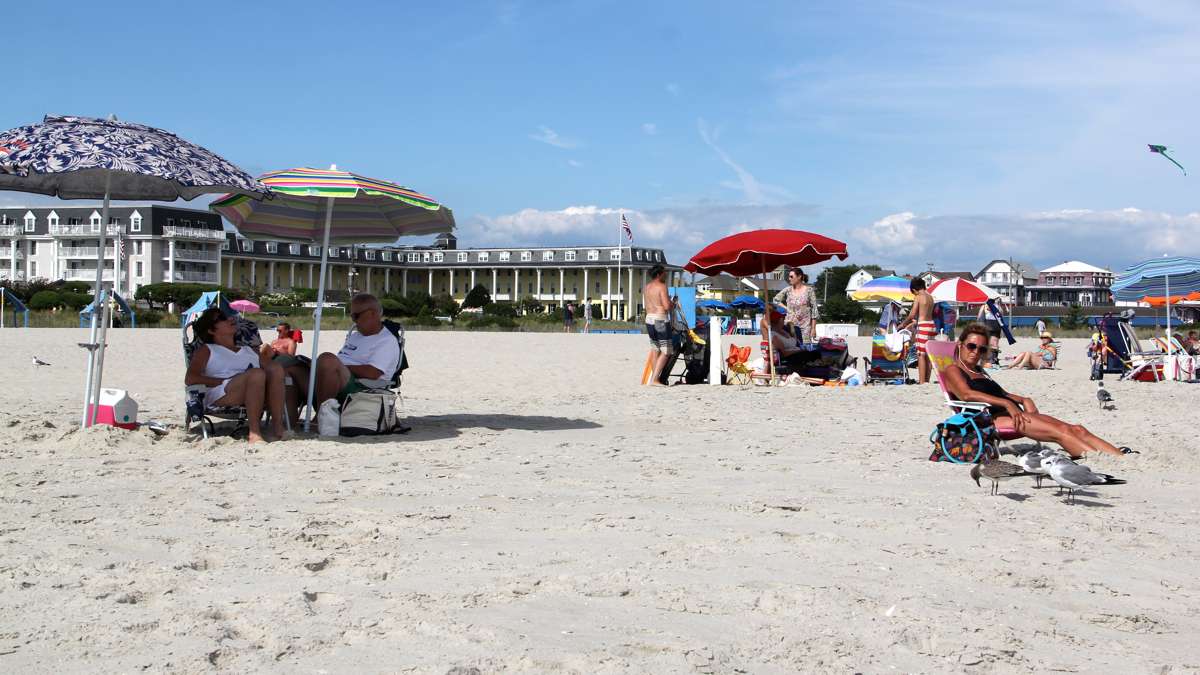
A modern beach scene shows Congress Hall, several blocks to the south of Stockton. (Emma Lee/WHYY)
-
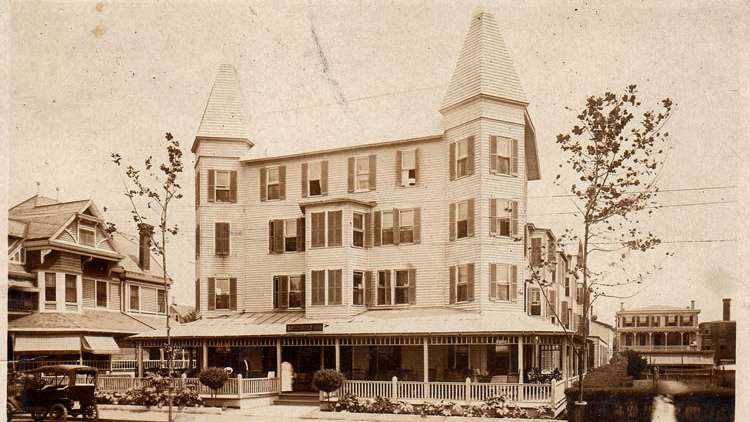
The Baltimore Inn on Jackson Street. (Richard Gibbs Collection)
-
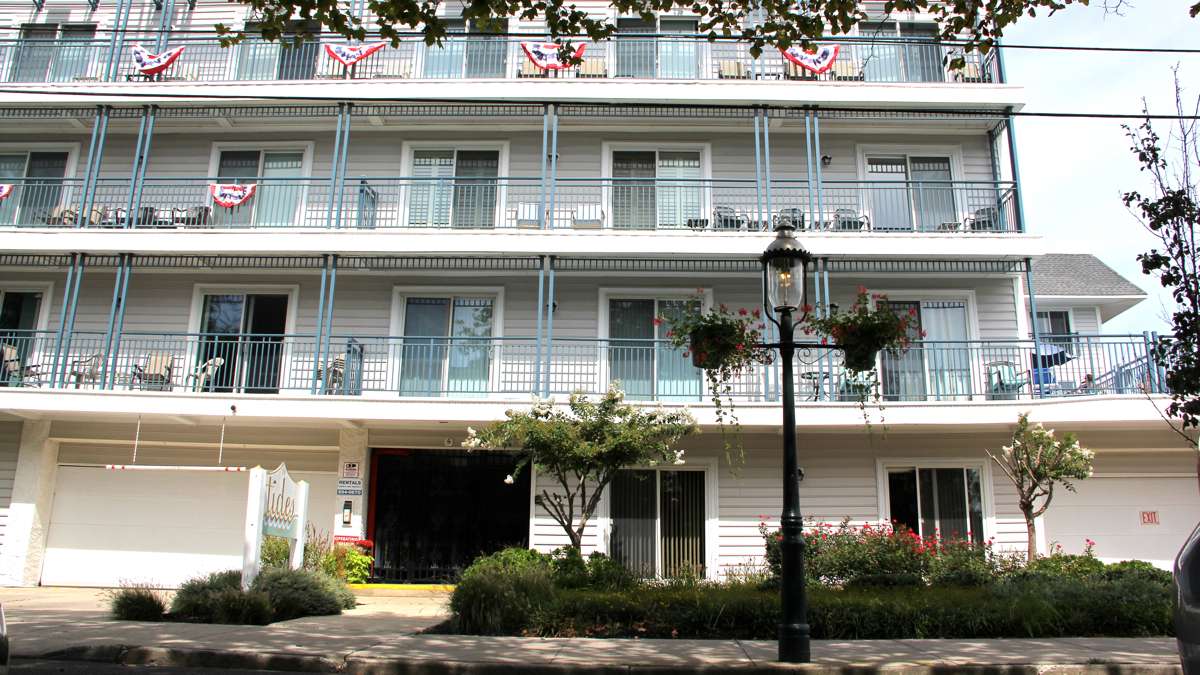
The Tides condos has replaced the Baltimore inn on Jackson Street. (Emma Lee/WHYY)
-
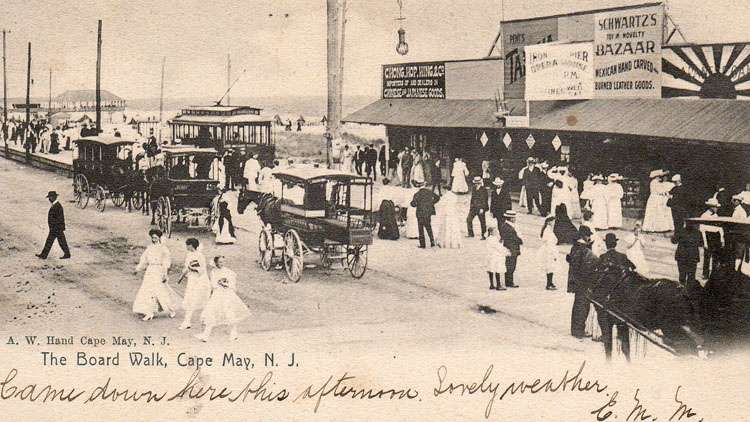
This post card from the early 1900s shows the trolley that passed through South Cape May to Cape May Point. The building shown was the front of the iron pier. (Richard Gibbs Collection)
-
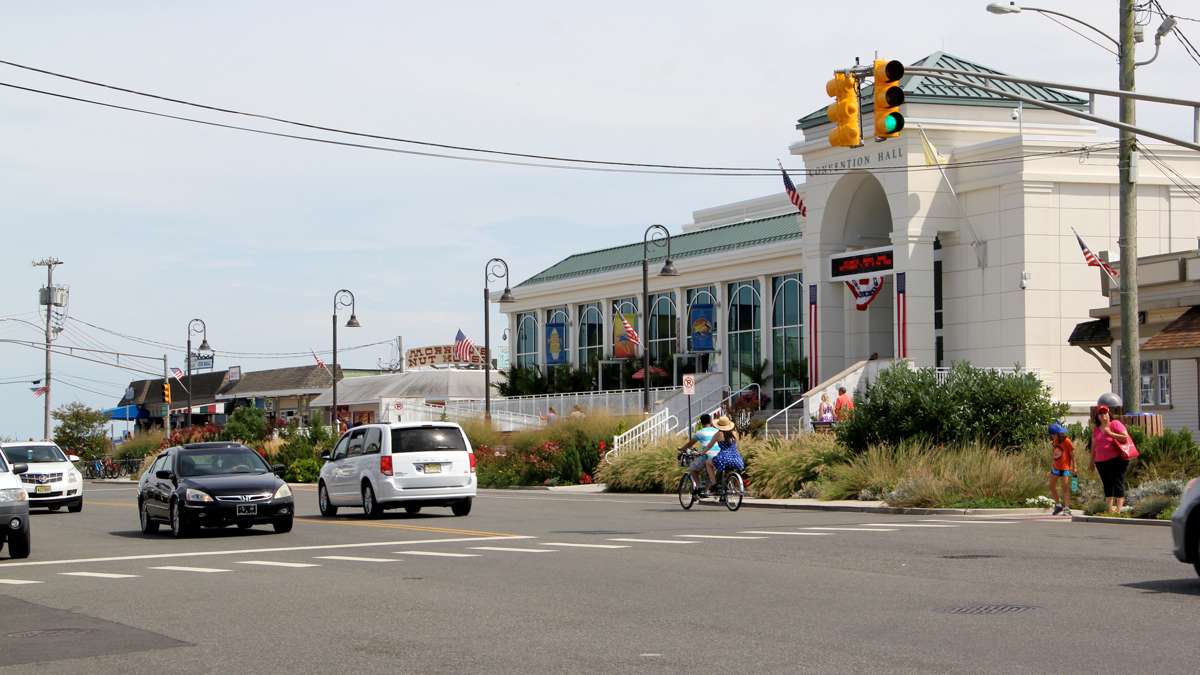
In 2015 the pier and the trolley are gone and Convention Hall dominates the boardwalk. (Emma Lee/WHYY)
-
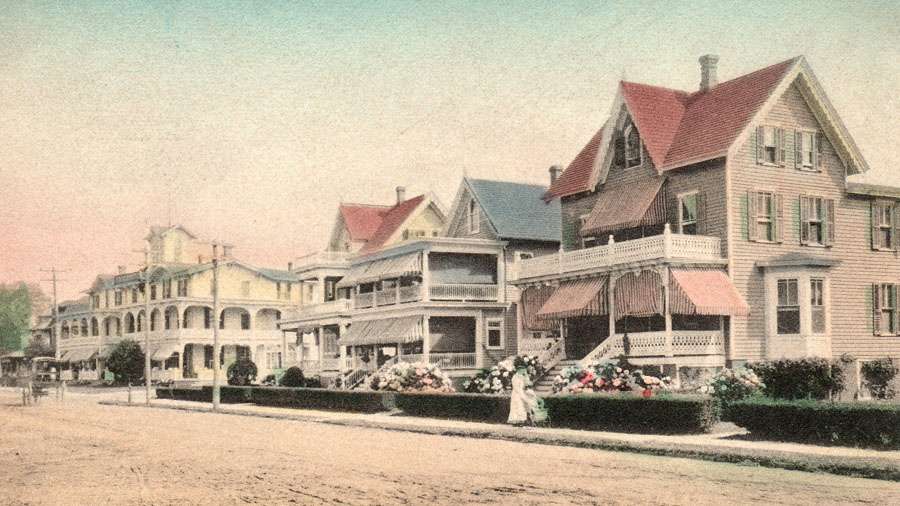
In 1909, Howard Street's Victorian treasures, including the Chalfont Hotel, were captured on this postcard. (Richard Gibbs Collection)
-
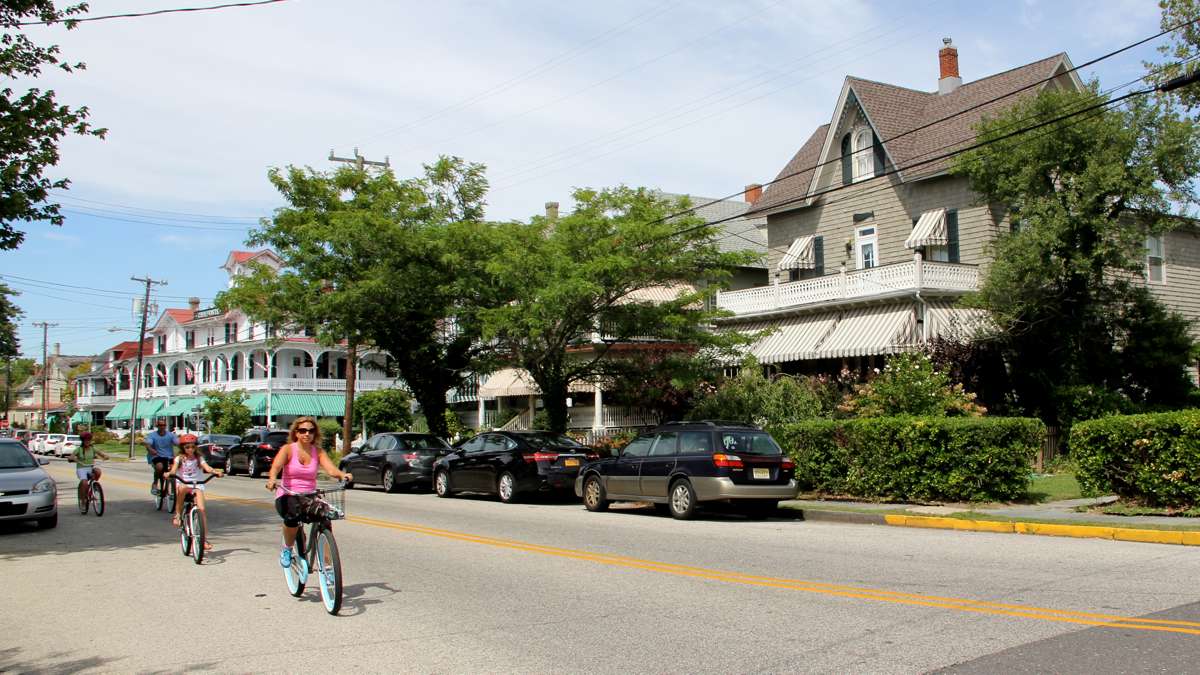
Today, the buildings on Howard Street are largely unchanged. (Emma Lee/WHYY)
-
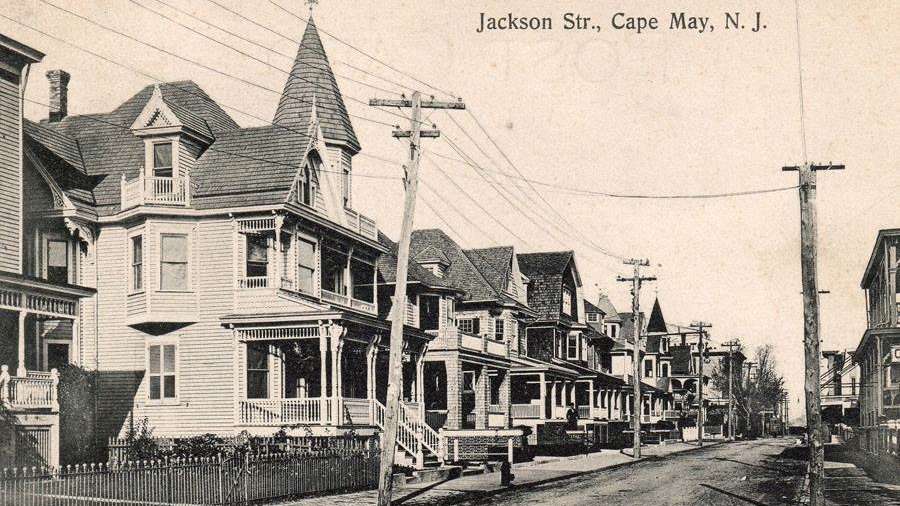
The Inn at 22 Jackson Street in Cape May. (Richard Gibbs Collection)
-
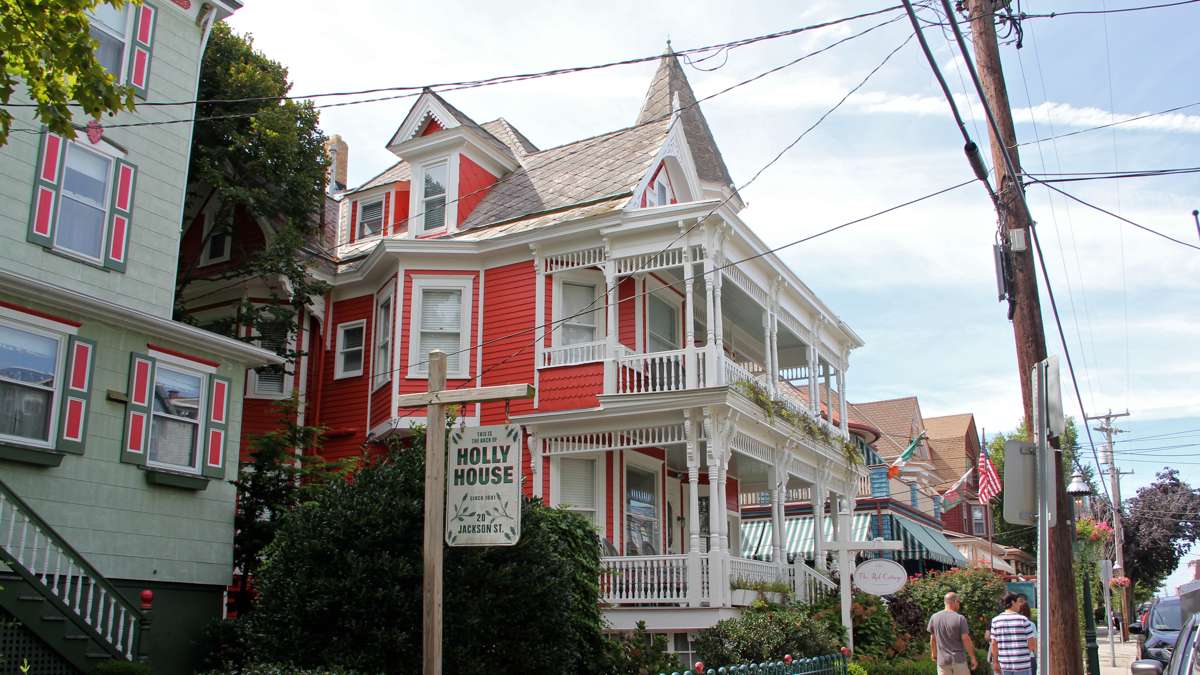
Today the Inn remains on Jackson Street under a new name, The Red Cottage. (Emma Lee/WHYY)
-
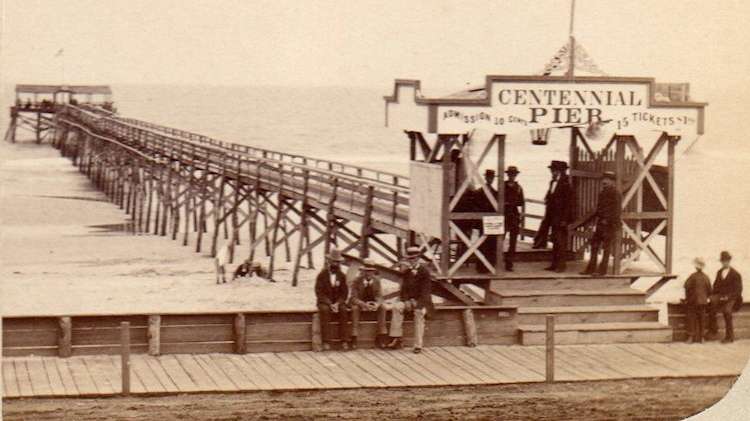
Centennial Pier in Cape May, circa 1880. The pier extended from the beach in front of Congress Hall. (Richard Gibbs Collection)
-
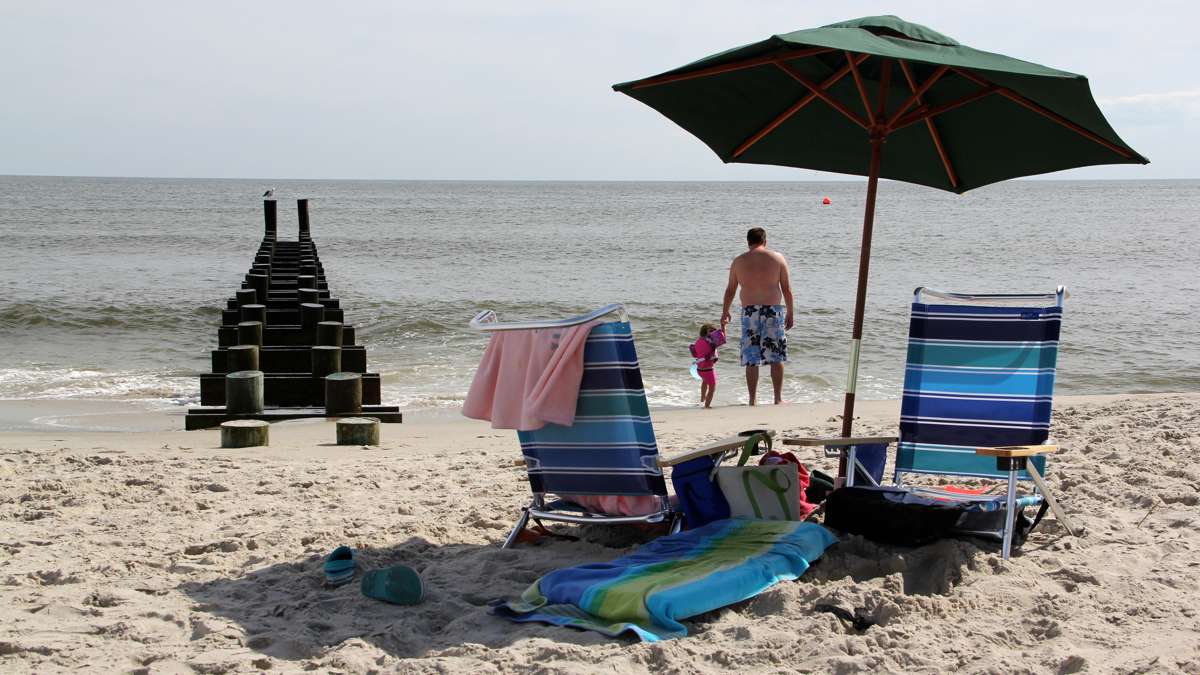
Today no piers remain on the beaches of Cape May. (Emma Lee/WHYY)
-
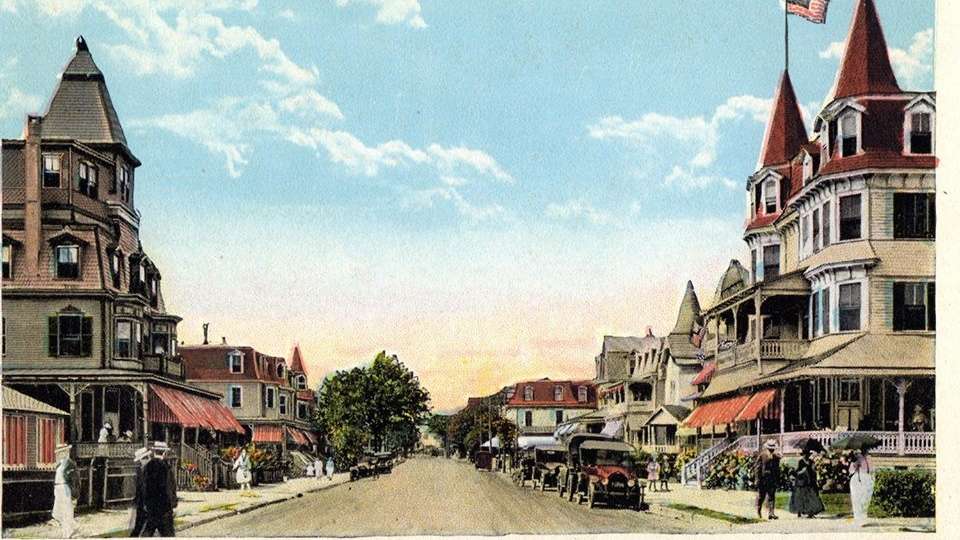
A postcard depicting Ocean Street as it was about 100 years ago. (Richard Gibbs Collection)
-
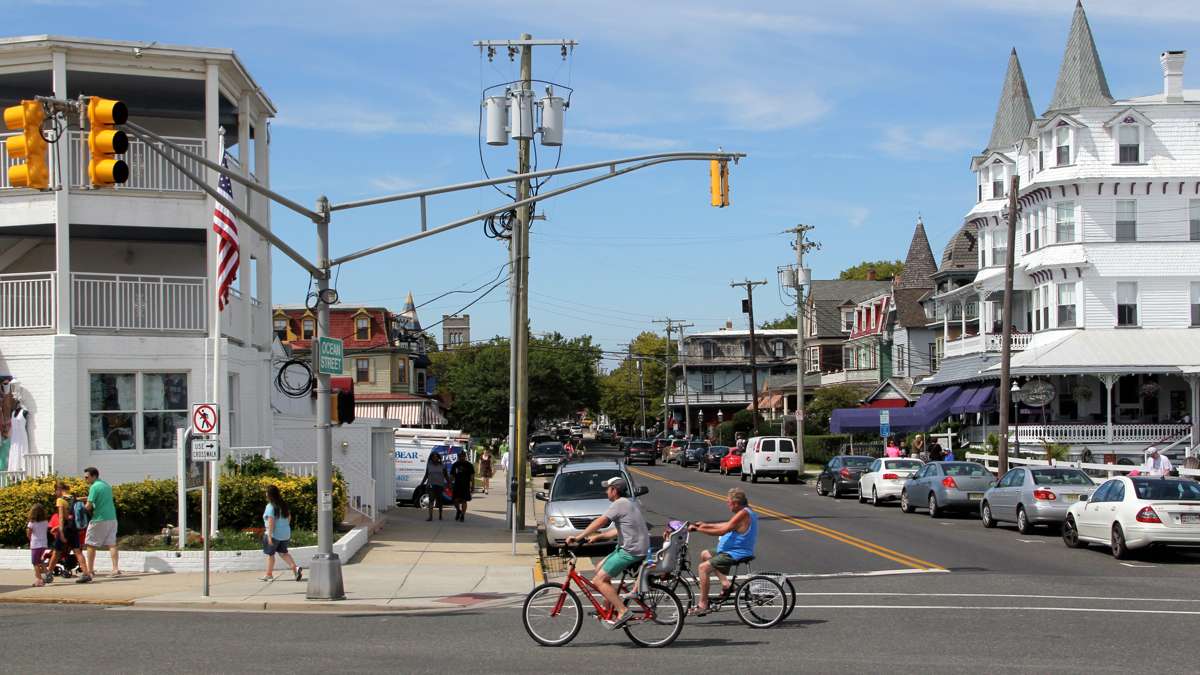
Ocean Street today. (Emma Lee/WHYY)
-
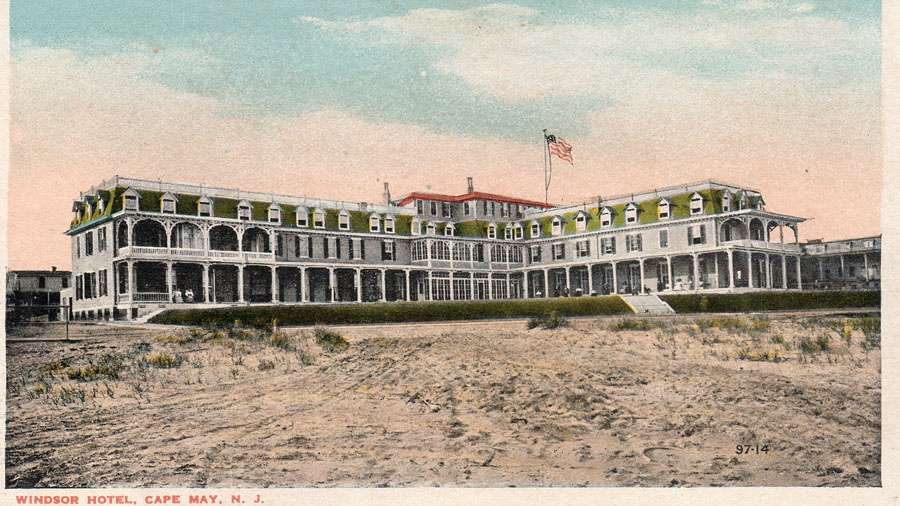
The Windsor Hotel on Beach Avenue between Windsor and Congress streets, as it looked 100 years ago. (Richard Gibbs Collection)
-
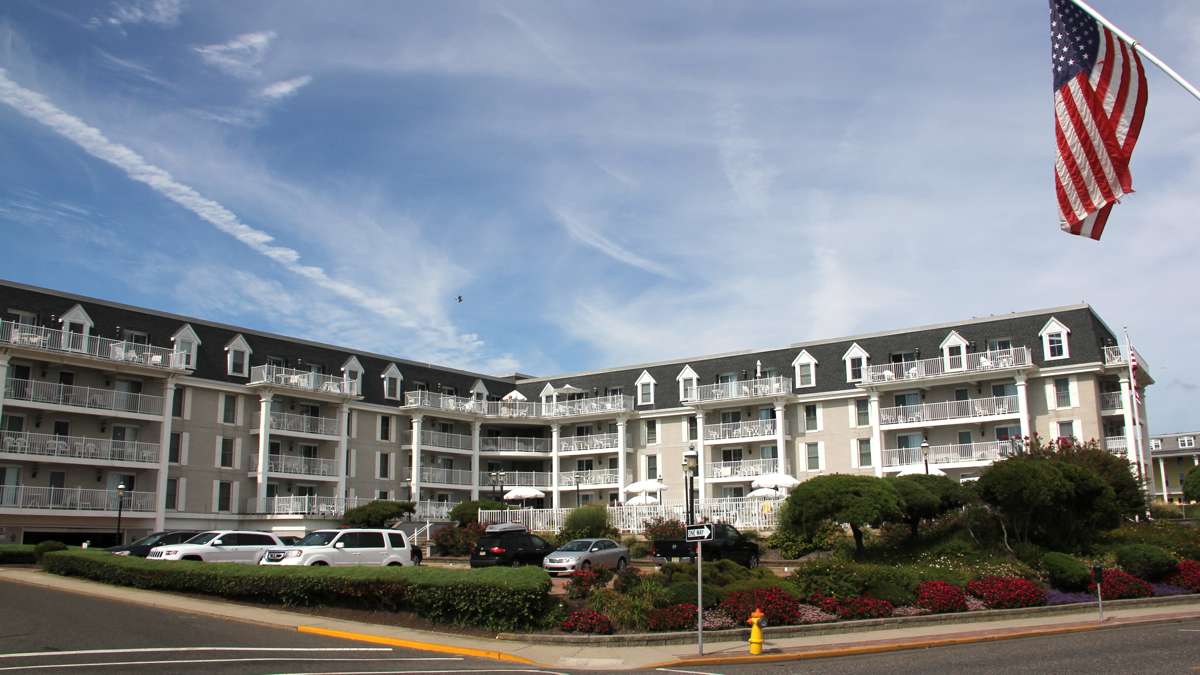
The Windsor Hotel today. (Emma Lee/WHYY)
-
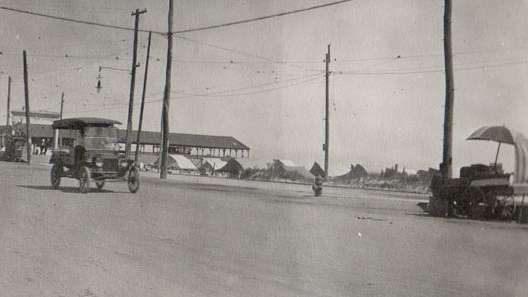
A photo of Beach Avenue in 1916 shows the former band pavilion across from Gurney street. (Richard Gibbs Collection)
-
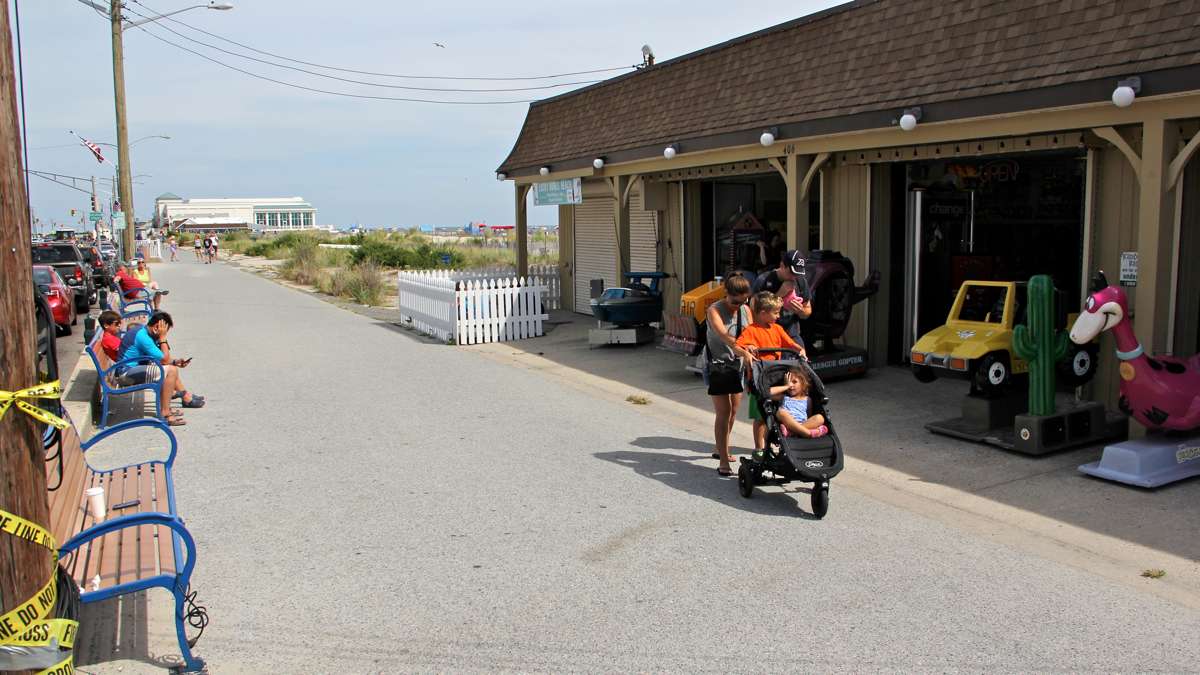
The same view today shows Cape May Convention Hall. (Emma Lee/WHYY)
-
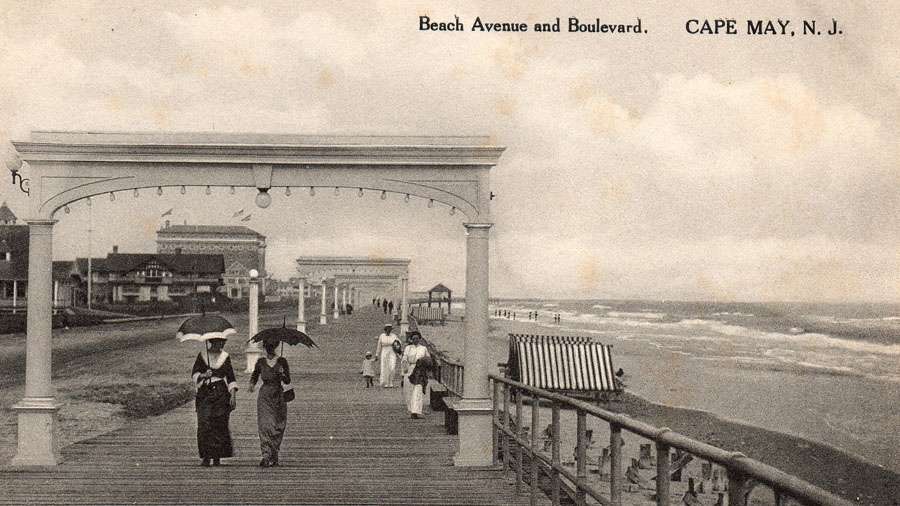
In 1910, the boardwalk extended through the 1100 block of Beach Avenue. (Richard Gibbs Collection)
-
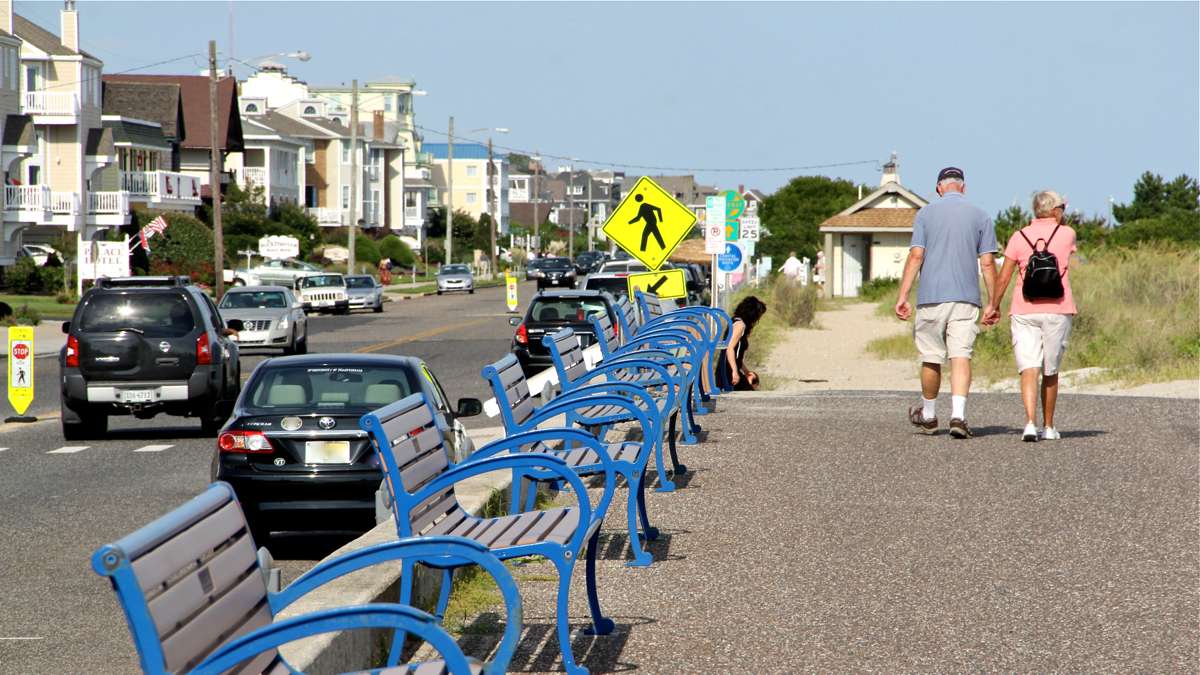
Today the boardwalk ends between Madison and Philadelphia avenues, leaving only a sandy path. (Emma Lee/WHYY)
One of the reasons Cape May remains a popular East Coast destination is its beautifully restored Victorian-era hotels and B&B’s. There are so many historic buildings here that the entire city of Cape May was added to the National Register of Historic Places in in 1970.
Visiting Cape May is like travelling back in time a hundred years. We recently noticed many old postcards appearing on a Cape May fan page on Facebook. The photos show what Cape May looked like in the early 1900’s when the city’s roads were unpaved and the railroads ruled.
One of the postcards shows the West Jersey Railroad train station at Beach Drive. Imagine stepping off a train and feeling the sea breeze hit you. Today, if you were standing there you might smell mahi-mahi fish tacos at the Ocean View Diner.
The owner of the postcards is Richard Gibbs who visits Cape May several times a year from his home in Essex Fells in Northern New Jersey. Gibbs started collecting postcards after staying at the Inn at 22 Jackson and becoming friends with the owners.
His collection of postcards can change the way you see modern Cape May. It reminds you that the Cape May we see today is itself unique and and generations from now some buildings could be gone forever.
We hope you enjoy looking through Richard Gibb’s postcards that give us a window into the past of one of New Jersey’s most celebrated towns.
Gibbs recommends anyone interested in seeing more older Cape May postcards find a copy of Cape May in Vintage Postcards by Don Pocher. Several of Gibb’s postcards are also featured in the book.
Editor’s note: We did our best to ensure the accuracy of the locations of the postcards. But if you think the location stated in the captions is not correct please leave a comment below and we’ll as our panel of experts at Cape May Good Times to weigh in.
WHYY is your source for fact-based, in-depth journalism and information. As a nonprofit organization, we rely on financial support from readers like you. Please give today.





